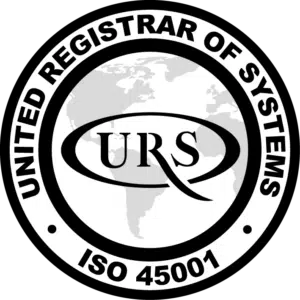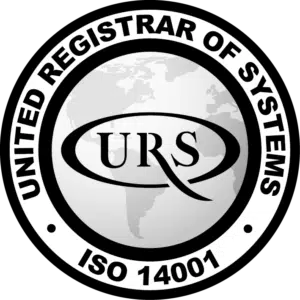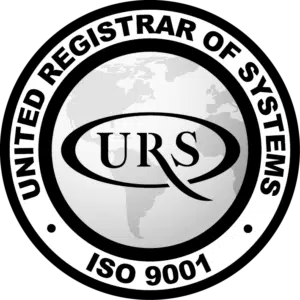Does It Matter What Printer Paper You Use?
Sep 12, 2024 • 5 minutes

We have all been there—you hit print, expecting crisp, clean documents, only to face paper jams, smudged ink or dull results. Whether you are printing worksheets in the classroom or important reports in the office, these disruptions waste resources and seriously slow down your workday.
Surprisingly, it is not always the printer’s fault. The type of paper you choose—its weight, thickness and finish—can directly impact print quality. Ensuring your paper is compatible with your printer also helps improve results and keep everything running smoothly.
With over four decades of experience in the paper market, Westcountry Group knows a thing or two about paper. Whether you require high-gloss sheets for professional brochures, premium colour paper for presentations or reliable everyday copier paper for high-volume printing, we can provide the right solution for any task, big or small.
Let’s explore how different types of printer paper can affect print quality, efficiency and even cost.
The Basics of Paper Types
Understanding the types of paper available can help you choose the best one for your printing needs. Two of the most common options are printer paper and copier paper, and while often used interchangeably, they serve different purposes.
- Printer Paper: Typically used for both colour and black-and-white documents, printer paper is available in a variety of finishes, like matte or glossy. It tends to be thicker and smoother than copier paper, making it ideal for higher-quality prints like presentations or documents with images.
- Copier Paper: Ideal for high-volume tasks like black-and-white text documents, copier paper is a thinner and more affordable option. It is designed to work with laser printers and photocopiers, making it great for everyday tasks like printing handouts, worksheets or general office paperwork.
Understanding the Different Types of Printer Paper
Now you know the difference between printer and copier paper, it is important to recognise the types of printer paper available and how they affect print quality. Different tasks require different finishes, thicknesses and weights of paper. Here are six common types of printer paper and their best uses:
- Regular Matte Paper: Ideal for everyday printing tasks like documents and worksheets, matte paper has a smooth finish that absorbs ink quickly to avoid smudges. It is perfect for high-volume tasks where quality is less of a priority.
- Glossy Paper: This high-shine paper is best for vibrant images and photographs. Glossy paper is coated to enhance colour and clarity but requires a longer drying time, which can lead to smudging if handled too soon. It works best with printers designed for high-quality graphics.
- Bright White Paper: This paper offers a premium look without the shine of glossy paper. With a bright white finish, it is ideal for professional documents that need a clean, crisp presentation.
- Photo Paper: Specifically designed for printing photographs, photo paper is thicker and has a distinct glossy finish on one side. It produces detailed, high-resolution prints, making it perfect for personal or professional photography.
- Heavyweight Paper: Also known as cardstock, this thicker paper is ideal for items that need to be sturdy, such as certificates, posters or business cards. Its weight ensures durability, but you should check that your printer is compatible with heavier paper beforehand.
- Inkjet Paper: Specifically designed for inkjet printers, this paper is highly absorbent to prevent smudging and bleeding. It is perfect for smaller, high-detail printing tasks that require precision.
Bulk vs. Grammage: What’s the Difference?
If you have looked at paper packaging or read product descriptions, you may have seen terms like grammage and bulk. These measurements are important for understanding paper quality and making the right choice for your needs.
Grammage measures the weight of paper in grams per square metre (gsm), where the higher the grammage, the heavier and thicker the paper feels. For example, everyday copier paper typically weighs 80gsm, while premium paper for brochures or high-end documents may range from 120 to 160gsm. Heavier paper also has better opacity, preventing ink bleed-through, but is often more expensive due to the additional materials used in production.
Bulk refers to the thickness of paper, regardless of its weight, and is typically measured in cubic centimetres per gram (cm³/g). High-bulk paper has more air between the fibres, making it thicker but lighter and more opaque. This is ideal for brochures or marketing materials where you want a premium feel without increasing weight—or the costs associated with heavier grammage. Low-bulk paper, on the other hand, is more compact, with less air between the fibres, providing a smoother, thinner finish suitable for everyday printing tasks.
Matching Paper to Printer Technology
Choosing the right paper for your printer ensures smooth operations, fewer paper jams and improves overall print quality. Inkjet and laser printers, in particular, require different paper characteristics to produce the best results.
- Inkjet Printers: These printers work by spraying tiny droplets of liquid ink onto the paper. For this, an absorbent paper is ideal to prevent smudging and ensure the ink dries quickly. Matte or coated papers are often the best options for inkjet printers, especially for high-quality images or detailed prints.
- Laser Printers: Laser printers use toner, a dry powder that bonds to the paper using heat. Therefore, smoother, thinner paper works better with laser printers as it can handle the heat and toner application effectively. Glossy or very thick papers may not always be suitable for laser printers, as they can cause jams or print inconsistencies.
Choose Westcountry Group For All Your Paper Needs
At Westcountry Group, we are dedicated to helping schools and offices maintain smooth, efficient operations with the right supplies. From high-quality copier paper to specialty papers for presentations and brochures, we offer solutions that fit every printing need. With over four decades of experience, we understand the importance of selecting the right paper to improve print quality, save costs and increase productivity.
Please contact us today to explore how our paper supplies can support your needs. Call 0330 030 0330, email: paperorders@westcountrygroup.com or visit our website.






